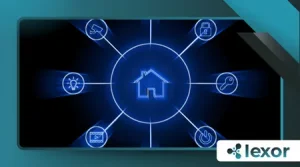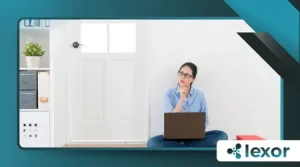How Thread 1.4 and Matter Updates Are Unifying Smart Home Networks

Thread 1.4 and Matter Updates Are Unifying Smart: The smart home landscape is rapidly transforming, moving from a fragmented collection of devices to a cohesive, interoperable ecosystem.
The convergence is being driven by pivotal advancements, most notably the evolution of Thread and the maturing of the Matter standard.
This shift promises to simplify setup, enhance reliability, and truly deliver on the smart home’s full potential.
What is the Significance of the Thread 1.4 Update for Network Stability?
The backbone of this unified future is the Thread mesh networking protocol. Its focus on low power and robust connectivity makes it ideal for a multitude of battery-operated and always-on smart devices.
The Thread 1.4 update, released in early 2024, is a game-changer for network stability and scalability.
This version introduces significant optimizations to routing and network discovery processes. Devices connect faster and maintain more reliable links, even in large, complex homes.
It’s an essential refinement for homes with dozens of connected gadgets, ensuring consistent performance.
Think of your current smart home as a series of isolated country roads, each leading to a different destination.
Thread 1.4, in this analogy, paves these roads into a multi-lane, high-speed interstate system. This significantly reduces congestion and the potential for device drop-offs.
How Does Matter’s Maturing Influence Device Interoperability?

Matter, the application layer built on top of protocols like Thread, Wi-Fi, and Ethernet, is the crucial step toward true plug-and-play simplicity.
Read more: What Is a Blockchain Explorer and How to Use It
Its purpose is to allow devices from different manufacturers to communicate effortlessly. The ongoing Matter updates continue to expand device category support and streamline commissioning.
The latest iterations have standardized device profiles for common accessories, from blinds to robot vacuums, ensuring uniformity.
This robust framework removes the need for multiple apps and proprietary bridges, significantly reducing user frustration.
This means a single tap in your chosen smart home app controls all Matter-certified devices, regardless of brand.
++Voice and Gesture Control vs App-Based Control: What Users Prefer & What’s Next
This development is finally delivering the promise of a universally compatible smart home.
Why should consumers need three different apps just to manage their lighting, thermostat, and garage door? Matter eliminates that unnecessary complexity.
What New Features Does the Synchronization of Thread 1.4 and Matter Offer?
When Thread 1.4 and Matter work in tandem, they create an incredibly powerful and responsive network. Thread handles the underlying, reliable, low-power communication.
++Creating Custom Routines with Your Smart Assistant
Matter provides the universal language for those communications. This combination enables several key advantages.
One major benefit is the ability for devices to switch between Thread and Wi-Fi more intelligently.
This “border routing” flexibility, refined in the latest specifications, maximizes both speed and battery life. Imagine a scenario where a smart door lock uses low-power Thread 1.4 for routine status updates.
If you need to quickly stream a live video feed from its integrated camera, it seamlessly switches to Wi-Fi.
++Samsung SmartThings Introduces Two-Way Thread Network Unification
This seamless transition offers users both energy efficiency and high-bandwidth capability when needed.
This dynamic approach optimizes network resources and improves the overall responsiveness of your home automation routines.
| Metric | Pre-Matter/Thread 1.4 | Post-Matter/Thread 1.4 |
| Setup Time | Minutes (per device) | Seconds (per device) |
| Interoperability | Low (Brand-specific) | High (Universal) |
| Reliability | Variable (Prone to drops) | High (Mesh-based) |
| Energy Use | Higher (Excess Wi-Fi) | Lower (Thread optimization) |
Why is Consumer Confidence Important for Smart Home Adoption?
The past few years of fragmented systems and compatibility issues have made many consumers hesitant to invest deeply in smart home technology.
The stability delivered by the Thread 1.4 and Matter Updates Are Unifying Smart home experience. This change directly addresses and resolves the previous points of friction.
According to a 2024 report by the Connectivity Standards Alliance (CSA), the number of certified Matter products doubled in the first half of the year.
This dramatic increase reflects the industry’s commitment and the growing faith in the standard’s viability.
This momentum gives consumers the assurance that their new smart devices will not become obsolete next year.
The stability and ease-of-use foster greater consumer trust, which is crucial for mass adoption. When devices simply work together, the technology moves from a niche hobby to an accessible, mainstream utility.
How Do These Updates Simplify Troubleshooting and Maintenance?
Troubleshooting a smart home previously meant isolating a single, proprietary connection issue among a sea of different protocols. The unified approach simplifies diagnosis significantly.
Since devices speak the same Matter language over a resilient Thread 1.4 network, identifying and resolving connection issues becomes much easier.
A robust example is the simplified update process.
Instead of managing firmware updates for ten different brands through ten different apps, the Matter fabric allows for more consolidated and consistent maintenance.
One major hub can manage updates for all Matter devices, minimizing user involvement and maximizing system security.
This reduced maintenance burden is one of the most practical benefits of Thread 1.4 and Matter Updates Are Unifying Smart networks.
It shifts the user experience from managing technology to simply enjoying the benefits of automation.
Why Are These Advancements Crucial for the Smart Home’s Future?
The coordinated progress in Thread 1.4 and Matter Updates Are Unifying Smart homes by establishing a robust, universal standard.
This is not merely an incremental upgrade; it is a foundational shift. It ensures that consumers are investing in an open ecosystem, not a walled garden.
The long-term impact is profound. It fosters innovation among smaller companies who no longer need to build proprietary ecosystems. ]
They can focus solely on creating the best device, confident it will integrate seamlessly. This encourages a healthier, more competitive market.
Ultimately, this seamless integration is what consumers have always expected. Will we soon look back and wonder how we tolerated a fragmented smart home environment for so long?
Conclusion: The Future of a Truly Smart Home
The synchronized evolution of Thread 1.4 and Matter Updates Are Unifying Smart home networks, delivering a future that is finally cohesive and truly intelligent.
The latest updates provide the speed, reliability, and interoperability necessary for mass market adoption.
We are witnessing the end of smart home silos and the beginning of a unified, effortless smart living experience.
Frequently Asked Questions: Thread 1.4 and Matter Updates Are Unifying Smart
Q: Does Matter replace Wi-Fi or Bluetooth?
A: No. Matter is an application layer, a universal language. It runs over existing network protocols like Wi-Fi, Ethernet, and Thread.
Q: Are all Thread devices automatically Matter-compatible?
A: Not necessarily. A device needs to have a Thread 1.4-capable radio and implement the Matter application layer to be fully compliant and interoperable.
Q: Do I need a Border Router for my Thread devices?
A: Yes. A Border Router (often built into modern hubs or Wi-Fi routers) is essential. It connects the low-power Thread network to your home’s main Wi-Fi/Ethernet network and the internet.
Q: Can older devices be updated to support Matter?
A: Some legacy devices with sufficient processing power and connectivity (like Wi-Fi) can receive a firmware update to become Matter-compatible.
Thread-only devices usually require hardware with the right radio.
